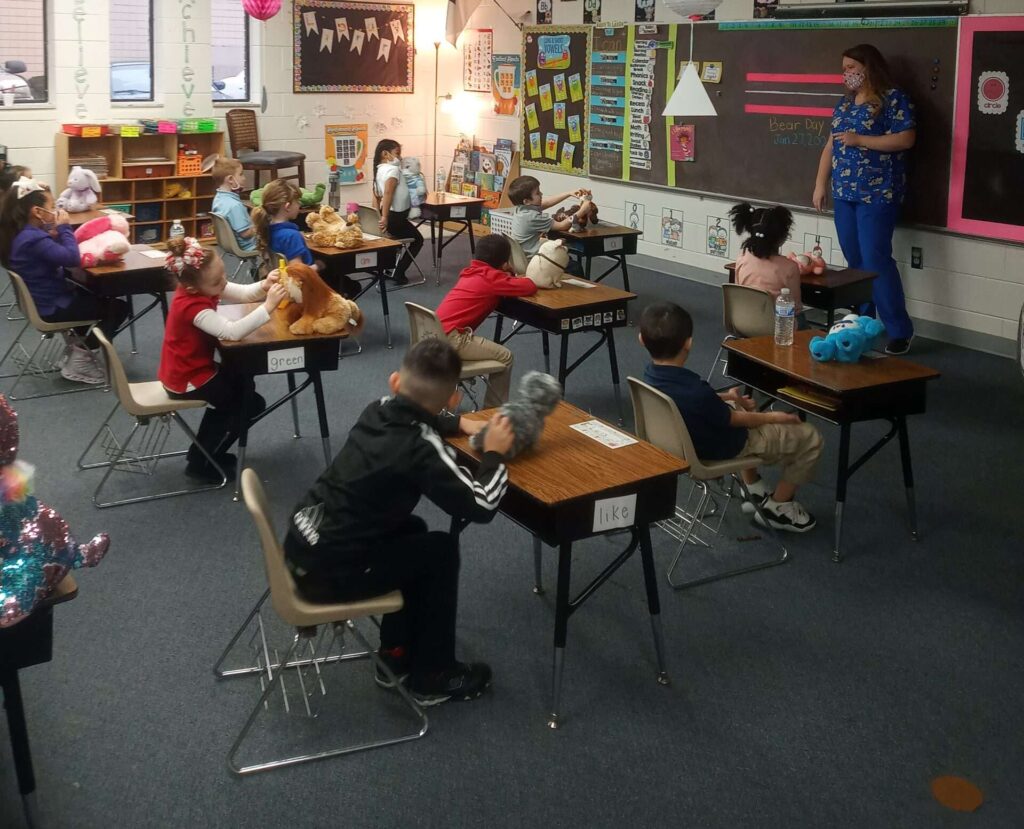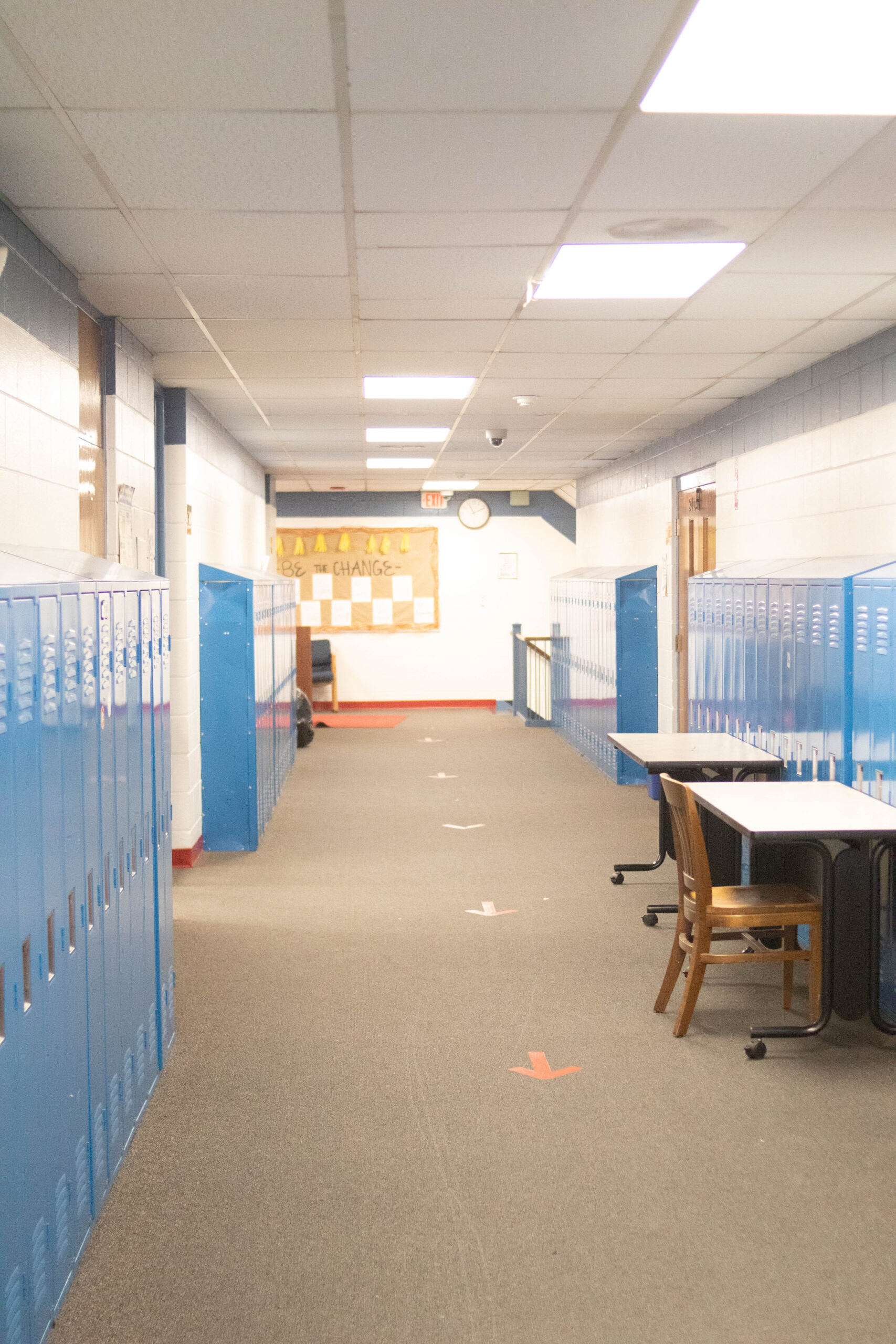For many children, learning to read is one of the most important skills they will acquire in their academic careers. Reading readiness is the foundation upon which this skill is built. Without developing reading readiness skills, children may struggle with learning to read, which can have long-term consequences for their academic success and overall confidence.
In this blog post, we will explore the importance of preparing for new reading levels and what parents, educators, and caregivers can do to help children achieve reading readiness.
What Is Reading Readiness?

Reading readiness refers to the set of skills and abilities that children need to acquire before they can learn to read successfully. These skills include language development, phonemic awareness, letter recognition, print awareness, and comprehension.
The Skills and Abilities Required for Reading Readiness
Children need to develop specific skills and abilities to achieve reading readiness. These include:
- Language development: The ability to understand and use language is crucial for reading readiness. Children need to be able to understand and communicate in their native language to develop pre-reading skills.
- Phonemic awareness: Phonemic awareness is the ability to hear and manipulate individual letter sounds in words. This skill is essential for learning to read and write.
- Letter recognition: Children need to be able to recognize and name the letters of the alphabet to develop reading skills.
- Print awareness: Print awareness refers to the understanding that written language conveys meaning and that it is organized in a particular way.
- Comprehension: Comprehension is the ability to understand what is being read. Children need to be able to understand the meaning of words, sentences, and paragraphs.
How Reading Readiness Differs From Actual Reading
Your child’s readiness for reading is not the same as actual reading. Reading readiness is the set of skills and abilities that children need to develop before they can learn to read.
Actual reading, on the other hand, is the ability to read words, sentences, and paragraphs with fluency and comprehension. Children who have achieved reading readiness are better equipped to learn to read successfully.
How To Assess Reading Readiness
There are several common methods for assessing reading readiness. These include:
- Observation: Parents, caregivers, and educators can observe children’s behavior to determine whether they have developed the necessary skills for reading readiness.
- Assessment tools: There are several assessment tools that parents and educators can use to assess reading readiness. These include the Phonological Awareness Literacy Screening (PALS) and the Dynamic Indicators of Basic Early Literacy Skills (DIBELS).
- Teacher evaluation: Teachers can evaluate students’ reading readiness through classroom performance and assessments.
Importance of Early Detection
Early detection of reading readiness is essential for ensuring that children have the necessary pre-reading skills and abilities to learn to read successfully. By identifying children who are not reading-ready early, parents and educators can intervene and provide targeted support to help these children develop the necessary skills.
Signs That a Child Is Not Reading Ready
Some signs that a child is not reading-ready include:
- Difficulty with letter recognition
- Inability to recognize rhyming words
- Struggling to understand the meaning of words
- Difficulty understanding basic sentence structure
- Lack of interest in books and reading
Benefits of Reading Readiness
Children who have achieved reading readiness are better equipped to learn to read fluently. This means that they can read with greater accuracy and speed, which can improve their overall reading comprehension.
Increased Comprehension
Reading readiness also helps children develop the necessary skills for understanding what they read. Children who have achieved reading readiness tend to have increased comprehension abilities, which allows them to better understand and retain information from the texts they read.
Improved comprehension skills help children to make connections between the text and their own experiences and knowledge, leading to deeper understanding and critical thinking. This, in turn, has a positive impact on academic performance and overall learning.
Factors that Affect Reading Readiness

The Role of Cognitive Development
Cognitive development plays a significant role in a child’s reading readiness. As children develop, they acquire the cognitive skills necessary for reading, including attention, memory, and processing speed. These skills allow children to recognize and understand the letters and words they see on a page.
Additionally, cognitive development also affects a child’s ability to comprehend what they read. Children with strong cognitive skills are better able to make connections between the words they read and the meaning of those words, leading to improved comprehension.
Environmental Factors That Can Impact Reading Readiness
Environmental factors, such as exposure to language, play a crucial role in a child’s reading readiness. Children who are regularly exposed to language through conversation, books, and other forms of communication tend to develop stronger language and literacy skills.
On the other hand, children who are not exposed to language or who experience a language-poor environment may struggle with reading readiness.
Parents and caregivers need to create an environment that promotes language development and reading readiness. This can be done by reading to children, encouraging conversation, and providing access to books and other reading materials.
How To Overcome Challenges
Despite the best efforts of parents and caregivers, some children may still struggle with reading readiness. In these cases, it is important to identify and address any underlying issues that may be hindering progress.
One effective strategy is to work with a reading specialist or tutor who can provide targeted instruction and support. Additionally, parents and caregivers can work with their child’s teacher to develop a plan for addressing any challenges and providing additional support.
By identifying and addressing challenges early on, children can develop the skills necessary for starting school.
Preparing for New Reading Levels
Preparing for new reading levels requires a combination of goal-setting, strategy development, and parental involvement.
The Importance of Setting Goals
Setting goals is an important first step in preparing for new reading levels. Goals should be specific, measurable, and achievable, and should be developed in collaboration with the child’s teacher.
Goals may include increasing reading speed, improving comprehension, or developing a love for reading. By setting clear goals, children and their parents can track progress and celebrate successes along the way.
Strategies for Developing Reading Readiness
There are many strategies that parents and caregivers can use to help children develop reading readiness. These may include reading aloud to children, practicing phonics and word recognition, and encouraging conversation and critical thinking.
Additionally, parents and caregivers can incorporate reading into everyday activities, such as trips to the grocery store or walking around the neighborhood. By making reading a part of everyday life, children are more likely to develop a love for reading and the skills necessary for reading readiness.
The Role of Parents and Caregivers
Parents and caregivers play a crucial role in helping children develop reading readiness. By creating a language-rich environment, setting goals, and providing support and encouragement, parents can help children develop the skills and love for reading necessary for success in kindergarten school and beyond.
The Impact of Technology on Reading Readiness
Technology has had a significant impact on reading readiness, providing new tools and resources for developing literacy skills.
The Benefits and Drawbacks of Technology
Technology can be a powerful tool for developing reading readiness. Interactive reading apps and word games can engage children and help them develop literacy skills in a fun and engaging way.
However, there are also drawbacks to technology that can negatively impact reading readiness. Excessive screen time can lead to decreased attention spans, which can affect a child’s ability to focus on reading. Additionally, some apps or word games may not be designed with proper reading instruction in mind, leading to ineffective or even harmful teaching methods.
To overcome these challenges, it’s important for parents and educators to carefully choose technology tools that are designed specifically for promoting reading readiness. Look for apps or games that have positive reviews and that incorporate best practices for teaching literacy skills, such as phonics instruction, sight word recognition, and reading comprehension strategies.
It’s also important to set limits on screen time and ensure that technology use is balanced with other forms of learning and play. Encourage children to engage in activities that promote reading readiness, such as reading books together, playing with educational toys, or practicing writing and drawing.
How Technology Can Be Used To Improve Reading Readiness
When used correctly, technology can be a powerful tool for improving reading readiness. Interactive apps and games can engage children and help them develop literacy skills in a fun and interactive way. For example, some apps use gamification techniques to incentivize children to learn new words or practice their reading skills.
Another way technology can improve reading readiness is by providing access to a wide variety of reading materials. E-books and online libraries can expose children to different types of literature and help them develop a love for reading.
Best Practices for Using Technology To Develop Reading Readiness
To ensure that technology is being used effectively for developing reading readiness, it’s important to follow best practices. Here are some tips for using technology to promote reading readiness:
- Choose apps and games that are designed specifically for teaching literacy skills.
- Look for apps that incorporate research-based teaching methods, such as phonics instruction and reading comprehension strategies.
- Set limits on screen time and ensure that technology use is balanced with other forms of learning and play.
- Encourage children to use technology to access a wide variety of reading materials, such as e-books and online libraries.
- Monitor children’s use of technology and ensure that they are using it safely and appropriately.
By following these best practices, parents and educators can help children develop the skills they need to become confident and capable readers.
The Role of Teachers and Educators

Teachers and educators play a crucial role in promoting reading readiness. They are responsible for creating a learning environment that supports the development of literacy skills and for providing instruction that meets the needs of individual students.
Strategies for Teaching Reading Readiness
Effective instruction for reading readiness involves a combination of direct instruction, guided practice, and independent exploration. Here are some strategies that teachers and educators can use to promote reading readiness:
- Phonics instruction: Teaching students letter sounds and patterns and words.
- Sight words recognition: Helping students learn to recognize common sight words.
- Reading comprehension strategies: Teaching students strategies for understanding and remembering what they read.
- Vocabulary instruction: Teaching students unknown words and helping them develop a strong vocabulary.
- Guided reading: Providing students with guided practice reading in small groups with a teacher or other adult.
- Independent reading: Allowing students to explore books and read independently at their own pace.
- Writing instruction: Helping students develop writing skills that support reading readiness.
By using a combination of these strategies, teachers and educators can help students develop the skills they need to become confident and capable readers.
How To Integrate Reading Readiness Into the Curriculum
Integrating reading readiness into the curriculum is essential for ensuring that students have the skills they need to succeed in reading and other academic subjects. Here are some ways that teachers and educators can integrate reading readiness into the curriculum:
Incorporate Reading Instruction into All Subjects
One way to integrate reading readiness into the curriculum is to incorporate reading instruction into all subjects. This means providing students with opportunities to read and comprehend text in every subject area, not just in language arts.
For example, in science class, students could be asked to read and interpret a scientific article or report. In math class, they could read word problems and apply their reading comprehension skills to solve them. This approach helps students see the relevance of reading in all areas of their education.
Use High-Quality, Developmentally Appropriate Texts
Another way to integrate reading readiness into the curriculum is to use high-quality, developmentally appropriate texts. Teachers should select texts that are challenging but not too difficult for their students, as this will help them build their reading skills and confidence.
Texts should also be diverse and culturally relevant to ensure that all students see themselves represented in the materials they are reading.
Provide Opportunities for Independent Reading
Teachers can also integrate reading readiness into the curriculum by providing opportunities for independent reading process. This can include in-class silent reading time, book clubs, or reading journals.
Independent reading helps students develop their reading fluency, vocabulary, and comprehension skills and also fosters a love of reading that can last a lifetime.
Utilize Differentiated Instruction
Differentiated instruction is another way to integrate reading readiness into the curriculum. This approach involves tailoring instruction to meet the individual needs of each student, including their reading level.
By providing differentiated instruction, teachers can ensure that all students are challenged and engaged, regardless of their current reading ability.
Collaborate with Parents and Caregivers
Finally, teachers can integrate reading readiness into the curriculum by collaborating with parents and caregivers. This includes communicating regularly with families about their child’s reading progress and providing resources and strategies for parents to support their child’s reading development at home.
By incorporating reading readiness into the curriculum in these ways, teachers and educators can help ensure that all students have the skills they need to succeed in reading and other academic subjects.
Common Reading Readiness Programs and Tools
There are many reading readiness programs and tools available to parents, caregivers, and educators. These programs and tools are designed to help children develop the skills they need to succeed in reading. Here is an overview of some of the most popular reading readiness programs and tools:
Overview of Popular Programs and Tools
Reading Eggs
Reading Eggs is highly engaging and interactive, but may be too simplistic for more advanced readers.
ABCmouse
ABCmouse offers a wide range of educational activities, but some parents may find the interface overwhelming.
Starfall
Starfall has been around for many years and has a proven track record of success, but may not be as visually appealing as some of the newer programs.
Teach Your Monster to Read
Teach Your Monster to Read is highly engaging and allows children to create their monster avatar, but may not be as comprehensive as some other programs.
Raz-Kids
Raz-Kids offers a vast library of books at different reading levels but may be too expensive for some families.
How To Choose the Best Program or Tool for Your Child
When choosing a reading readiness program or tool, it’s essential to consider your child’s individual needs and interests. Some children may thrive with a highly interactive program like Reading Eggs, while others may prefer the more straightforward interface of Starfall. Additionally, it’s important to consider your budget, as some programs like Raz-Kids can be expensive.
Parents and caregivers should also consider the research behind each program or tool and ensure that it aligns with evidence-based teaching practices. Look for programs that have been tested in studies and shown to be effective in developing reading readiness skills.
Ultimately, the best program or tool is one that your child enjoys using and that helps them develop the skills they need to succeed in reading and other academic subjects. Don’t be afraid to try out different programs or tools until you find one that works best for your child.
The Role of Motivation in Reading Readiness
Motivation is a key factor in developing a love for reading and achieving reading readiness. Children who are motivated to read are more likely to engage with reading materials and develop the necessary skills for success. Parents and educators need to find ways to foster motivation and create a positive reading environment for children.
Strategies for Fostering a Love for Reading
There are many strategies that parents and educators can use to foster a love for reading in children. Some effective strategies include reading aloud to children, providing a variety of reading materials, allowing children to choose their reading materials, and creating a positive reading environment. Parents and educators can also model a love for reading by regularly reading themselves and discussing books with children.
The Impact of a Love for Reading on Academic Success
A love for reading can have a significant impact on academic success. Children who love to read are more likely to have strong literacy skills, improved comprehension, and better academic performance overall. In addition, a love for reading can help children develop a lifelong love of learning and a curiosity about the world around them.
Common Reading Readiness Challenges and Solutions
Despite the benefits of reading readiness, many children face challenges in developing these skills. Some common challenges include language barriers, learning disabilities, and a lack of interest in reading. However, there are many strategies and resources available to help children overcome these challenges and achieve reading readiness.
Common Challenges That Children Face
Some common challenges that children face in developing reading readiness include difficulties with phonemic awareness, decoding, fluency, and comprehension. Additionally, some children may struggle with motivation or may face environmental barriers like a lack of access to reading materials.
Strategies for Overcoming Reading Readiness Challenges
There are many strategies that parents and educators can use to help children overcome reading readiness challenges. These strategies may include providing extra support and resources, using a multi-sensory approach to learning, incorporating technology, and creating a positive reading environment.
How To Support Struggling Readers
For children who are struggling with reading readiness, it’s important to provide individualized support and resources. Parents and educators can work together to identify the child’s specific needs and create a plan for addressing those needs. This may include working with a reading specialist, using targeted interventions, and providing extra support at home.
How To Measure Reading Readiness Progress
Measuring progress is an important part of ensuring that children are developing the necessary skills for reading readiness. There are many methods available for measuring progress, including standardized tests, informal assessments, and progress-monitoring tools.
Common Methods for Measuring Progress
Some common methods for measuring reading readiness progress include benchmark assessments, diagnostic assessments, and progress monitoring tools. These methods can help parents and educators track a child’s progress over time and identify areas that may require additional support.
The Importance of Tracking Progress
Tracking progress is essential for ensuring that children are developing the necessary skills for reading readiness and making progress toward their goals. It also allows parents and educators to identify areas that may require additional support and make adjustments to their approach as needed.
Strategies for Celebrating Success
Celebrating success is an important part of fostering motivation and creating a positive reading environment. Parents and educators can celebrate success by acknowledging progress, providing positive feedback, and offering rewards or incentives for achieving goals.
Final Thoughts
Reading readiness is essential for ensuring that children develop the necessary skills for success in reading and other academic subjects. By assessing reading readiness, fostering a love for reading, and providing individualized support, parents and educators can help children overcome challenges and achieve their full potential. It’s important to remember that reading readiness is a process that takes time and effort, and it’s never too early or late to start. By setting goals, tracking progress, and celebrating successes, children can build confidence and motivation, which can translate into academic success.
By investing in reading readiness, we can help children unlock the power of literacy and achieve their full potential. For help preparing your kids for reading success, contact us today!










